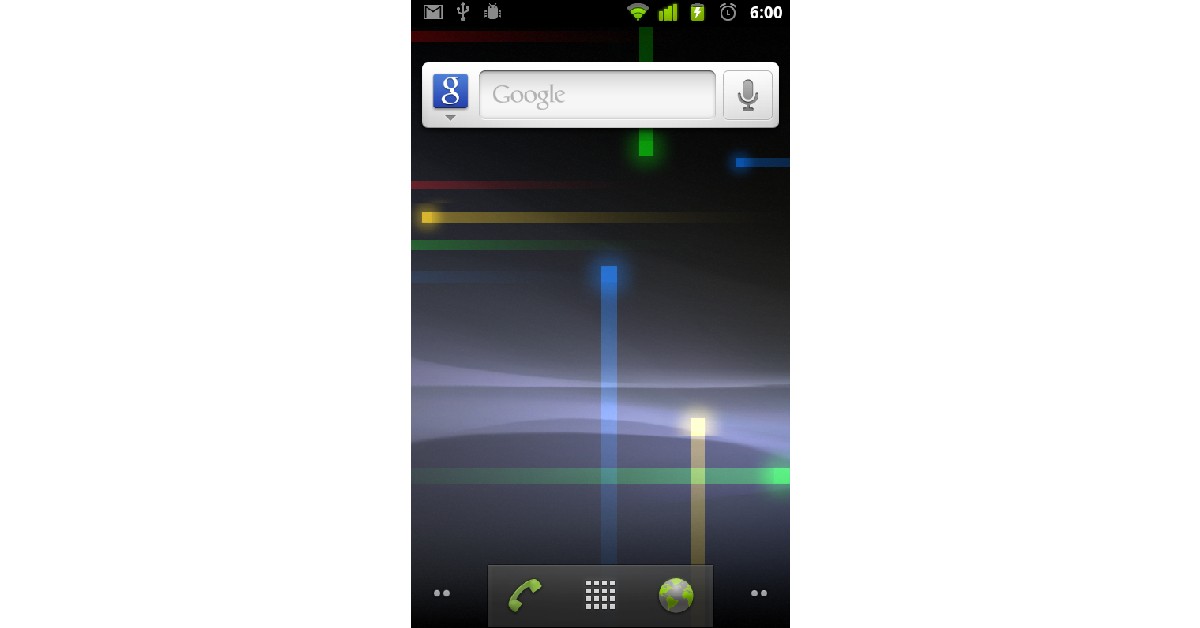Read Also: Snapchat+ subscription service goes live in India, adds six premium features to the app
Android Version 1.0 to 1.1
Release Date: September 23, 2008. The first two versions of Android did not have a codename. Android was just getting started as an OS, offering web browser and email support, with the ability to take pictures. It also came with the most basic Google apps like Google Maps, Google Search, Google Talk, and Google Calendar.
Android Version 1.5: Cupcake
Release Date: April 27, 2009. Android 1.5 started the trend of naming each successive version after a dessert item. Codenamed ‘Cupcake’, Android 1.5 supported a few third-party apps other than the ones published by Google and was the first Android OS to come with an on-screen virtual keyboard. It also had the copy-paste feature, and for the first time, users could upload videos to YouTube from their phones.
Android Version 1.6: Donut
Release Date: September 15, 2009. With the Donut update, Android added features like voice search, multiple select, text-to-speech engine, and WVGA screen resolutions.
Android Version 2.0 to 2.1: Eclair
Release Date: October 26, 2009 Released just six weeks after Donut, Eclair broke Android into the mainstream, leading to more smartphone companies adopting the OS. Eclair came with Bluetooth 2.1, account sync, and Microsoft Exchange email support.
Android Version 2.2 to 2.2.3: Froyo
Release Date: May 20, 2010. With Froyo, Android became a faster and better-performing OS. Froyo came with Android Cloud and Adobe Flash support. The security updates also patched a few concerning issues with Eclair. The performance of the OS was lifted on all fronts.
Android Version 2.3 to 2.3.7: Gingerbread
Release Date: December 6, 2010. Android introduced Near Field Communication (NFC) for the first time with Gingerbread. It also came with a host of other updates like press-select, enhanced copy-paste, and download manager.
Android Version 3.0 to 3.2.6: Honeycomb
Release Date: February 22, 2011. Honeycomb was launched exclusively for tablets and saw Android switching from its green look to blue for the ‘holographic’ design. Honeycomb came with faster performance and features like WiFi lock, Google Books, and support for joysticks and gamepads.
Android Version 4.0 to 4.0.4: Ice Cream Sandwich
Release Date: October 19, 2011. Ice Cream Sandwich ditched the Adobe Flash Player support, but came with widgets, screenshot capture, photo editor, and spell check.
Android Version 4.1 to 4.3.1: Jelly Bean
Release Date: June 27, 2012. With Jelly Bean, Android offered one-finger gestures, multiple user accounts for tablets, 4k support, and native emoji support.
Android Version 4.4 to 4.4.4: KitKat
Release Date: September 3, 2013. Initially named Key Lime Pie, KitKat was the first Android with ‘OK Google’ voice assistant. It also introduced new features like wireless printing and screen recording. With KitKat, Android switched the darker theme for brighter colours.
Android Version 5.0 to 5.1.1: Lollipop
Release Date: November 12, 2014. With Lollipop, Android integrated card support into its UI. Cards showed up as app notifications on the lock screen and even on the Recent Apps screen.
Android Version 6.0 to 6.0.1: Marshmallow
Release Date: May 28, 2015. First launched for Nexus 5 and Nexus 6 phones, and Nexus 9 tablet, Marshmallow was later launched for all Android devices on October 5, 2015. Marshmallow came with fingerprint reader support and added an update to preserve battery life in standby mode.
Android Version 7.0 to 7.1.2: Nougat
Release Date: August 2022, 2016 Nougat was the first Android OS with a split screen mode and data saver feature. It also offered picture-in-picture mode, battery usage alert, and allowed users to send gifs directly from the keyboard.
Android Version 8.0 to 8.1: Oreo
Release Date: July 24, 2017 Oreo offered users more control over the notifications, native picture-in-picture mode, faster boot time, and Google Play Protect.
Android Version 9.0: Pie
Release Date: August 6, 2018. Pie featured an alternative hybrid gesture/navigation system, which allowed users to switch between apps with just one swipe. It also came with auto-suggested replies for messages, Digital Wellbeing mode, and privacy enhancements.
Android Version 10
Release Date: September 3, 2019. With its 10th version, Android stopped the trend of naming its OS after dessert items. Simply named Android 10, the OS offered improved touch gestures, a floating setting panel, and support for biometric authentication.
Android Version 11
Release Date: September 8, 2020. Android 11 came with big privacy updates, which allowed users to grant permissions related to camera, microphone, and location to apps. Users can choose to grant access to apps only while they are in use, only once, or outright deny it. Android 11 also made it hard for apps to request location data while working in the background. Permissions were automatically removed from dormant apps.
Android Version 12
Release Date: October 4, 2021. Android 12 is the latest Android iteration and will be replaced by Android 13 later this year. Integrating ‘Material You’ into its UI, the Android 12 reimagined how the OS looks on the surface. With Material You, users can set the colour theme for their phone and design it according to their taste. Read Also: How to Make Money Playing Video Games: Best 5 ways These were the different Android versions through the years. Android 13 was previewed earlier this year and will be released in the coming months. Google has already published four beta versions of Android 13. It will likely expand on ‘Material You’ and give users more control over the theme of the OS.


















